Discover the beauty of clownfish, their expansive range of breeds, and how to care for them like a professional in this insightful and explosive guide. Let’s get it started!
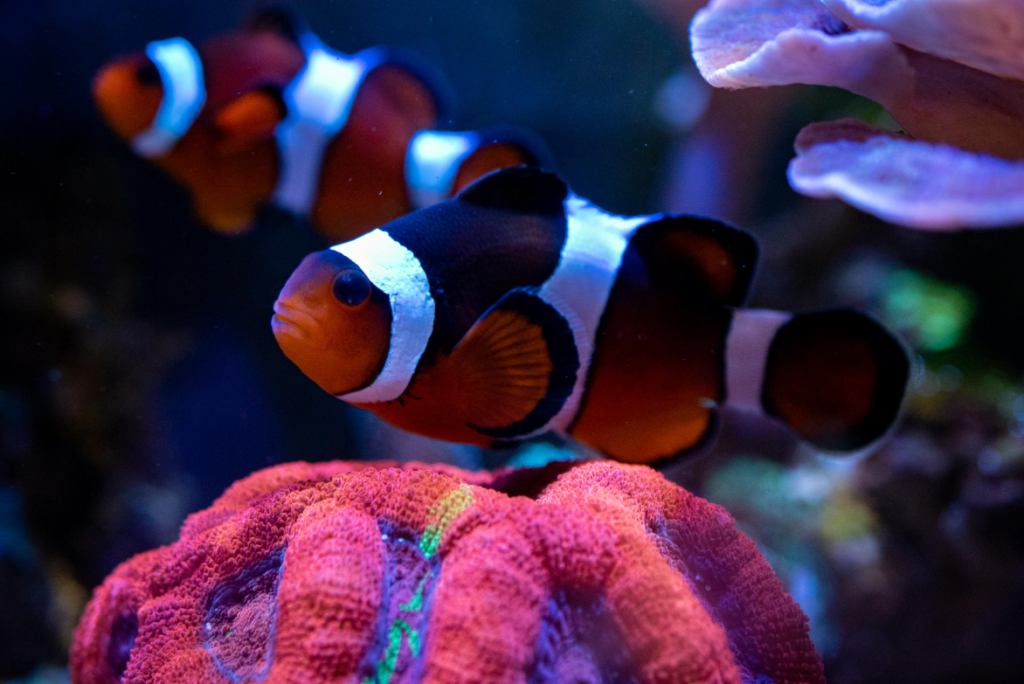
Hiya! Get in here for some aqua lessons 101, and let me take you through the different types of Clownfish species.
Owning a Clownfish is one sure way to create a fascinating environment in your home tank. This fish is one of the most beloved inhabitants of saltwater aquariums thanks to their captivating bold colors, impressive conduct in a community tank, and easy care requirement you’ll discover in this Clownfish care guide.
This Clownfish care guide explores 10 main species of clownfish and 18 designer clownfish breeds carefully created from selective breeding. By understanding their unique characteristics, care, needs, and temperaments, aquarists can make informed choices when choosing a clownfish for their aquarium.
Ocellaris Clownfish – Amphiprion ocellaris
A well-deserving list opener for the Ocellaris clownfish care, the renowned and luxurious Ocellaris Clownfish, also known as the Amphiprion ocellaris, exhibits a peaceful temperament and flexible adaptability perfect for nano tanks worldwide due to their mini size and wiggly swimming styles.
It’s a popular choice for beginners honing their aquarist skills and still craving the Midas touch of this beautiful orange, white, and black striped fish in their collection.
You can find this beginner-friendly fish in other designer varieties, including the Snowflake clownfish varieties, Frostbite, and Gladiator clownfish.
Orange Clownfish – Amphiprion percula
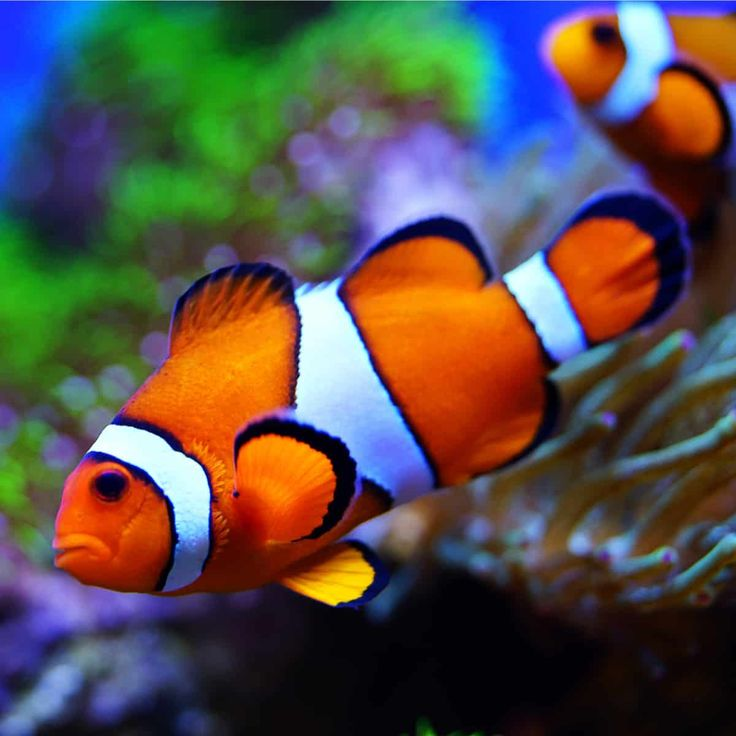
You can mistake this beauty and the Ocellaris Clownfish for twins, but the True Percula clownfish showcases different behavior, and slightly different physical and care-sensitive characteristics.
You’ll notice that the Percular clownfish has thicker, blander banding in the stripes and is a little more aggressive than the Ocellaris clownfish. They’re widely bred for their vibrant orange hue, with the most designer varieties being the Picasso clownfish and the Onyx Percula Clownfish.
Orange Clownfish care: For a diversified environment, pair this fish with other peaceful aquarium fish, such as blennies, grammas, and shrimp.
Saddleback Clownfish – Amphiprion polymnus
The unique name of this fish is borne from the saddle-shaped vertical white bar flowing across the middle of its black, white, and yellow body. This Panda Clownfish is among the few species of clownfish in the world that display different colors due to their dependency on their host anemones.
Saddleback Clownfish care is within the range of intermediate aquarists, thanks to their peaceful nature and easy diet preferences.
Suitable anemones for Saddleback clownfish include Heteractis crispa and Stichodactyla haddoni. Bear in mind that if you pair your saddleback with the former, you’ll get a darker intensity.
McCulloch’s Anemonefish – Amphiprion mccullochi
The rarity of this captive-bred clownfish, coupled with its striking dark body and complementing white bands on the head and fin area, has earned it a top spot on our list. The McCulloch Anemonefish also prefers host anemones in its tank to offer extra protection from attacks, so always look for captive-bred clownfish to optimize your experience and ensure easier care.
When compared with other clownfish, this rare clownfish species is larger, with a maximum length of 4.7 inches. Hence, you should keep them in a tank of at least 30 gallons.
Sebae Clownfish – Amphiprion sebae
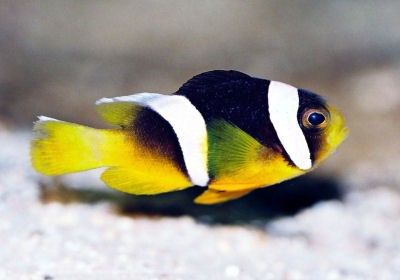
An interesting name for a physically intriguing fish. Although not as popular as the first two clownfish, this large clownfish species with exquisite yellow, black, and white patterns are no strangers to saltwater aquarium tanks. It is a reef-safe clownfish with a hardy nature and semi-aggressive temperament, allowing it to cohabitate reasonably with other small-sized species.
For Sebae Clownfish care, keep them in a tank that is at least 30 gallons to create enough space for them to swim.
Maroon Clownfish – Premnas biaculeatus
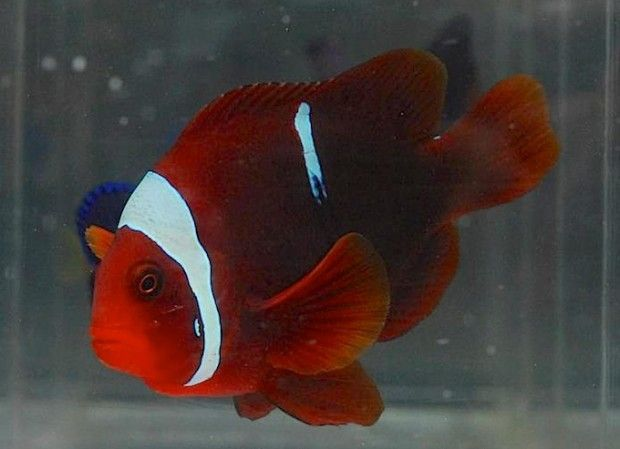
Originating from the rich waters of the Eastern Indian Ocean and the Western Pacific, the hardy Maroon Clownfish have stolen the hearts of millions of hobbyists due to their easy and expansive diet. However, the Maroon clownfish temperament is a huge turn-off as they fall among the territorial species, with records of them killing smaller mates.
Despite their reputation as aggressive saltwater fish, they have morphed into various color varieties, like the lovely Gold stripe Maroon variety, which people love.
The trick to handling their temperament is keeping them in a single-species setup. Simply put them in a solitary tank to prevent them from harassing small fish, shrimp, and snails.
Maldive Anemonefish – Amphiprion nigripes
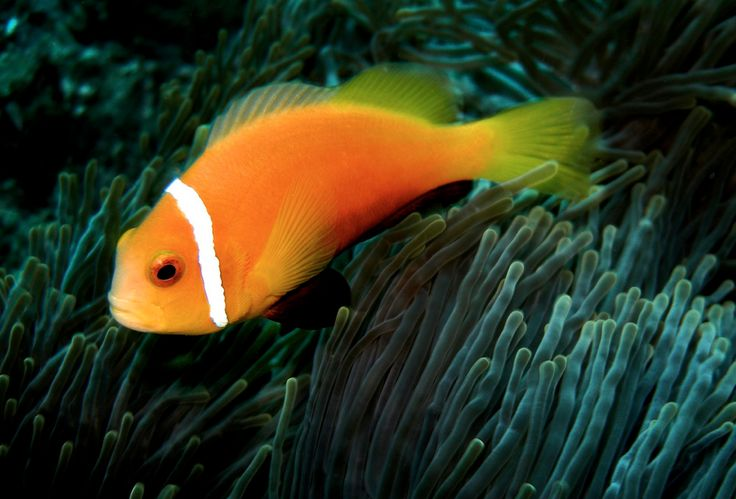
The name of this unusual clownfish species may remind you of one of the top holiday spots in the world. They may share the same qualities of sophistication – thanks to the unique single stripe around their heads, which greatly contrasts their yellowish-orange skin. The Maldive Anemonefish exhibits peaceful behavior when hosting suitable anemones for clownfish, which ensures their continued protection from predators in a tank.
As for Maldive anemonefish care, the process does not require you to be an expert; existing in the middle is okay. Just make sure you maintain stable water conditions and feed it a premium omnivorous diet.
Pink Skunk Clownfish – Amphiprion perideraion
The Pink Skunk Clownfish is an absolute stunner with a body color ranging between tangerine and peach garnished with a single white stripe running across its head, usually starting at the nose tips and ending at the back.
Pink Skunk clownfish care: This clownfish requires high care and prefers specific anemones, such as the Heteractis Magnifica and Macrodactyla doreensis, that protect from predators.
Thanks to captive breeding, we now have captive-bred morphs of the Skunk clownfish varieties, including the beautiful Rose-Magenta clownfish, which displays a higher strength level and adapts better to the home tank environment.
Clarkii Clownfish – Amphiprion clarkii
Looking for a hardy clownfish species? Here is a perfect one for you, known for its durability and high adaptability to any tank. The Clark’s anemonefish also has a high versatility in hosting all clownfish-compatible anemones with its semi-aggressive temperament.
Thanks to this guide, beginners can finely care for Clarkii clownfish with some experience. In turn, you’re rewarded with a thirst for adventure that leaves your aquarium beaming with life and color all day long.
Tomato Clownfish – Amphiprion frenatus
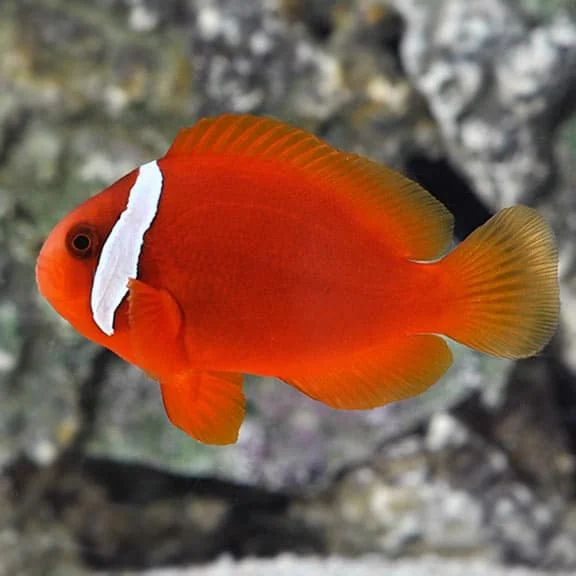
Get ready for a burst of color in your tank with this aggressive clownfish species. It is vibrant orange-reddish and has a single, bold, vertical white stripe that extends to the back of its head.
With a body length of up to 5.2 inches, your Tomato clownfish care regimen should include keeping it in a larger tank with at least 40 gallons of water. When properly cared for, they can live up to 15-16 years, and they also exist in other color morphs, like Fire Tomato clownfish.
Tips for Clownfish Care and Selecting the Best Anemone
Check out the best clownfish care tips you can find in this section.
Tank Size Requirement: A minimum of 20 gallons is generally required for smaller species, but you can go higher for larger species such as the Maroons and Sebaes.
Diet Preferences: An omnivorous balanced diet consisting of pellets, frozen foods, and live treats like bloodworms and algae. Introduce blanched vegetables to their diet for vitamins and minerals.
Water Quality Needs
| Water Temperature | 74’0F – 790 F |
| Water pH level | 8.1 – 8.4 |
| Salinity | 1.020 – 1.025 |
| Ammonia, Nitrite, Nitrate | 0 ppm, 0 ppm, and below 20 ppm. |
Best Anemone for clownfish:
- Bubble Tip Anemone (Entacmaea quadricolor)
- Long Tentacle Anemone (Macrodactyla doreensis)
- Magnificent Sea Anemone (Heteractis magnifica)
- Giant Carpet Sea Anemone(Stichodactyla gigantean)
- Marten’s Carpet Sea Anemone(Stichodactyla mertensii)
Clownfish share a symbolic relationship with anemones. In their arrangement, they live within the anemone’s tentacles meant to protect them from attacks with their stinging cells that do not affect the clownfish. The clownfish then holds up its end of the bargain by luring the prey closer so that the anemones can trap and clean the anemone’s tentacles.
Designer Clownfish Varieties
Simply put, designer clownfish varieties are secondary morphs of the common clownfish with slightly modified physical features such as fewer, denser stripes, unusual patterns, strange but equally captivating color variations, and even odd shapes and fins.
Snowflake Ocellaris
Snowflake Clownfish are designer clownfish varieties. They can be identified by the stunning white patterns on their skin, which earned them the name “dotted eye”. This longfin clownfish is a very popular collectible breed and can be easily found in any pet store selling Fancy Ocellaris clownfish.
Black Ice Clownfish
Another one of the many designer clownfish varieties with a genus blend of orange, white, and black patterns adorning its smooth body. This Fancy Ocellaris clownfish is a cross-breed between the black Ocellaris and the Snowflake Ocellaris, hence the thicker and sharper black lines on its body.
Wyoming White Clownfish
A rare blend of beauty and sophistication, the Wyoming white clownfish is one of the unique designer clownfish varieties found naturally in the seas of Fiji. There are less than 500 specimens of this beauty available worldwide, with their brilliant white bodies adorned with patches of black and orange.
Their primary diet includes plankton and algae existing in the water column. This fancy Ocellaris clownfish can also reach an average length of about 1 inch.
Frostbite Clownfish
Do not let the name scare you! This is another of the stunning designer Clownfish varieties we have. It is a crossbreed between the fancy Ocellaris snowflake clownfish and Wyoming White clownfish. The result is a pristine white body with map-like patches of orange and black, adding a pop of color.
Gladiator Clownfish
Popularly known as DaVinci clownfish, this fancy Ocellaris clownfish is the result of an intense crossbreeding process between the Wyoming white clownfish and the regular Ocellaris clownfish. This process results in different grades and affects their color patterns, which are mainly heavy black, white, and orange stripes.
Phantom Clownfish
This fancy Ocellaris clownfish doesn’t scare, but its unusually eerie mix of inky black patches and ghostly white stripes gives it a unique look among the designer clownfish varieties.
Longfin Phantom Clownfish
An OG Longfin clownfish in its glory with a matching color profile with the Phantom clownfish except for obvious physical modifications, including a shorter length, complimented with super longfin and darker black against a shinier white with peaks of electric blue hues. One of one in the designer clownfish varieties for sure!
Domino Ocellaris Clownfish
This is one of the monochromatic, subtle designer clownfish varieties with an all-black body, no stripes, and a simple white round marking over its gills with a slightly orange-colored mouth. This fancy Ocellaris clownfish has a faint white outline on its tail and gills, which I’m a huge fan of.
Black Storm Clownfish
One thing you can’t deny is the very catchy names these designer clownfish varieties have. This one is a longfin clownfish that’s a product of cross-breeding the Gladiator Ocellaris and the Black Ocellaris clownfish, resulting in this gorgeous black and white irregularly shaped stripes scattered all over the body and its head.
Snow Storm Clownfish
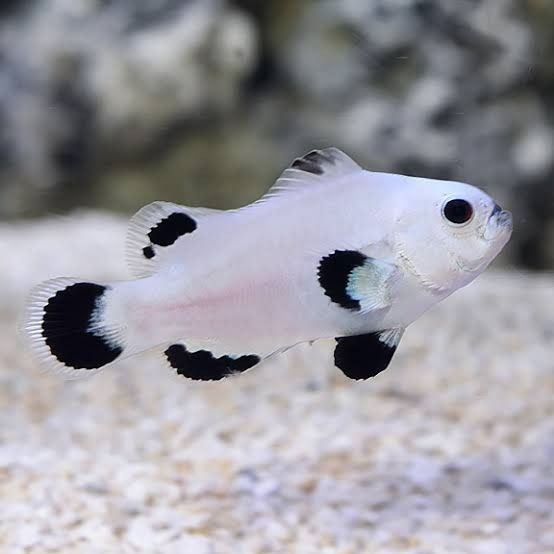
Black Storm and the Phantom designer clownfish varieties had a baby, and it is the Snow Storm clownfish with its white body, black lips, and equally black fins. The shimmery body of this fancy clownfish is a highlight in any home aquarium.
Here’s another gorgeous member of the designer clownfish varieties. Its pale white body and bold patches of orange and black hues give it a camouflage texture. The Picasso fancy clownfish is truly a work of art.
Misbar Clownfish
A stunning naturally occurring orange fancy Ocellaris clownfish with white and black stripes sitting in three distinct positions on its body. The black detail also outlines its gills and fins, giving it a bold appearance in an aquarium.
Nearly Naked Clownfish
Oh well, this intriguing fish also exists in the designer clownfish varieties universe. It has a simple appearance, no complicated stripes, a plain orange body, and dark fins. Nevertheless, this is a fancy Ocellaris clownfish and would brighten your tank.
Mocha Ocellaris
This fancy Ocellaris clownfish was bred for the sole purpose of being kept as home pets. They have a stunning brown, orange, black, and white color profile that adds luxury to any home tank and seals its place as one of the designer clownfish varieties on the market.
Darwin Black Ocellaris
The Darwin moniker is definitely a show-stealer! This fancy Ocellaris clownfish has evolved into one of the finest designer clownfish varieties. Its body is all black and features sophisticated white stripes against a black background.
Onyx Percula Clownfish
The brown tones on this fish clash beautifully with the white and orange accents, creating one of the most expansive color gradients in the designer clownfish varieties collection. It is a hard-to-find and highly desirable fancy Ocellaris clownfish.
Extreme Gladiator Clownfish
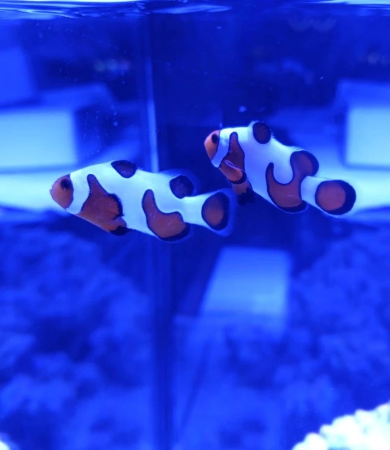
The irregularly shaped white stripes on each fancy Ocellaris clownfish are connected on both sides of the fish’s body. These stripes give way to clusters of orange highlights enclosed in pretty spirals and circled by bold black outlines.
Gold Stripe Maroon Clownfish
To close the designer clownfish varieties show, I have this absolute stunner covered in a unique coloration of maroon and gold stripes. This is definitely a fancy Ocellarius clownfish.
Conclusion
Bet you now know there are different types of designer clownfish, thanks to us!
Our list showcases the best clownfish for beginners. Whether your aesthetic aligns with the 10 species or the 18 designer breeds, there is something for everyone. From their diversity in appearance, temperament, and care requirements, our clownfish care guide has been carefully arranged to offer all the help you need toward a fulfilling journey.
Here’s to a blissful journey with any of these beauties you settle for!



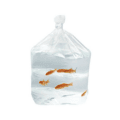
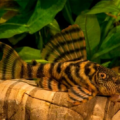
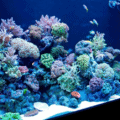

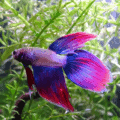
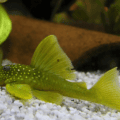
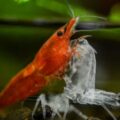
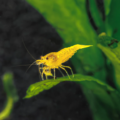
2 thoughts on “10 Different Types of Clownfish + 18 Designer Breeds”